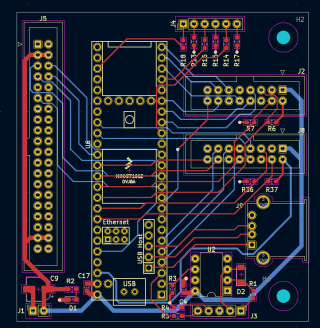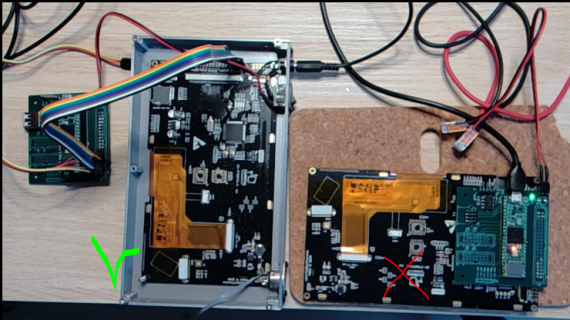Hi,
For reasons unknown I have started to recreate the old Notator/Creator sequencer software originally made for Atari. The intention is to run this on a T4.1 with a 5-7" TFT (yet to be selected). As I already made a couple of sequencer projects which can be reused this is so far mainly a UI project.
I despise touch control, so want to use a graphical mouse/keyboard UI (external peripherals on usb, no problem there). Having never worked with the concept of mouse cursors, I ran into many cases where it is difficult to draw the cursor and background cleanly without a full screen redraw (which is too slow). Just deleting at the last cursor position and redrawing at the new is sometimes ok but there are many cases where it is not. What is the best way to accomplish this? Are there libraries for controllers like RA8875 that support "overlay" in a suitable fashion?
Apart from the cursor, there are no elements that need to be updated frequently.
Here is an example from the original UI. It was usually run at 640x400 resolution on a monochrome monitor:
https://exxosforum.co.uk/atari/mirror/tamw/notator.htm
Any hints are welcome. Apologies for rambling.
Cheers, Daniel
For reasons unknown I have started to recreate the old Notator/Creator sequencer software originally made for Atari. The intention is to run this on a T4.1 with a 5-7" TFT (yet to be selected). As I already made a couple of sequencer projects which can be reused this is so far mainly a UI project.
I despise touch control, so want to use a graphical mouse/keyboard UI (external peripherals on usb, no problem there). Having never worked with the concept of mouse cursors, I ran into many cases where it is difficult to draw the cursor and background cleanly without a full screen redraw (which is too slow). Just deleting at the last cursor position and redrawing at the new is sometimes ok but there are many cases where it is not. What is the best way to accomplish this? Are there libraries for controllers like RA8875 that support "overlay" in a suitable fashion?
Apart from the cursor, there are no elements that need to be updated frequently.
Here is an example from the original UI. It was usually run at 640x400 resolution on a monochrome monitor:
https://exxosforum.co.uk/atari/mirror/tamw/notator.htm
Any hints are welcome. Apologies for rambling.
Cheers, Daniel



